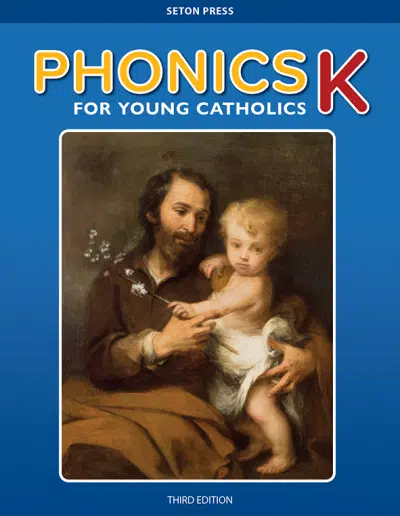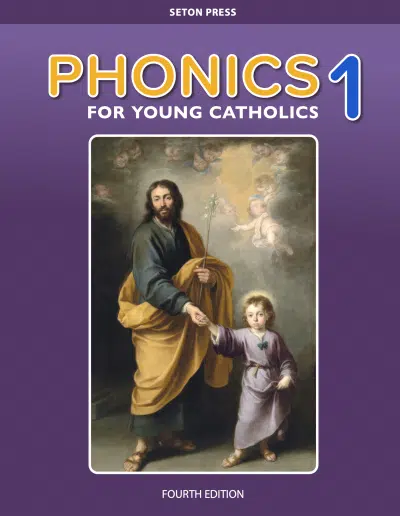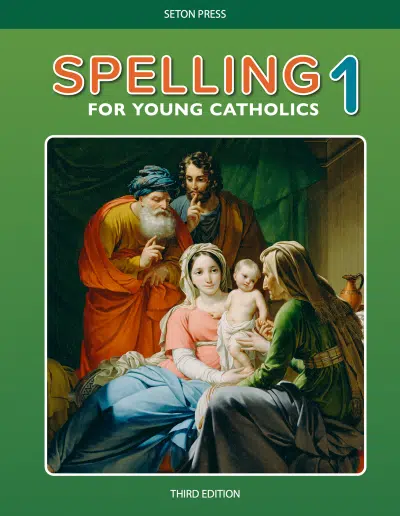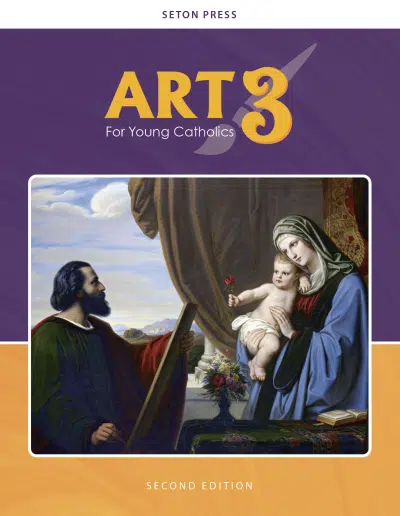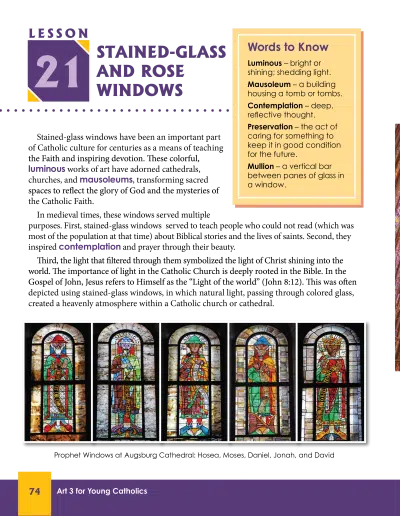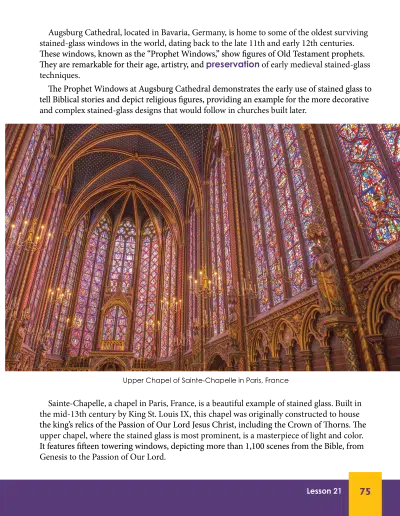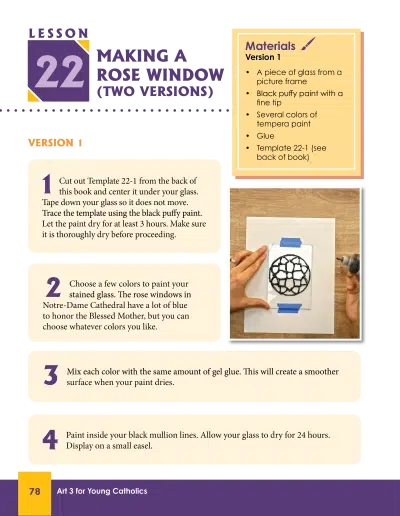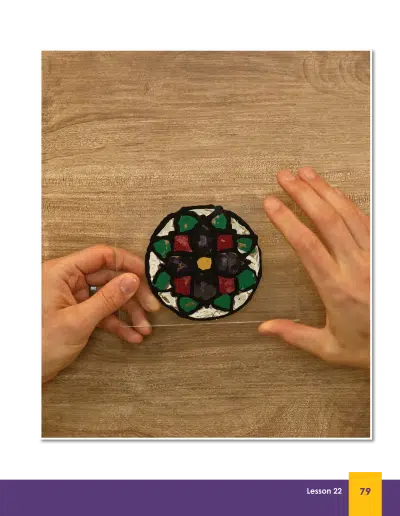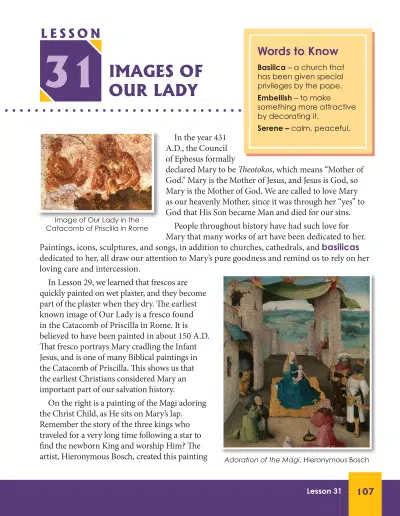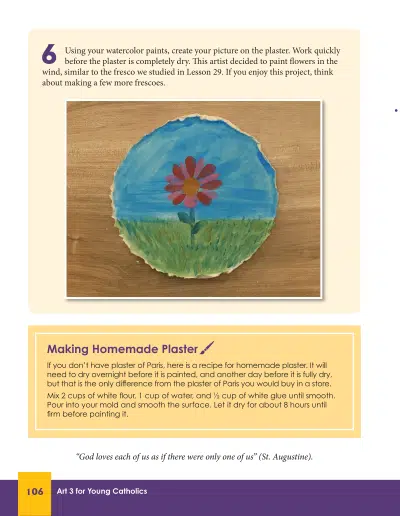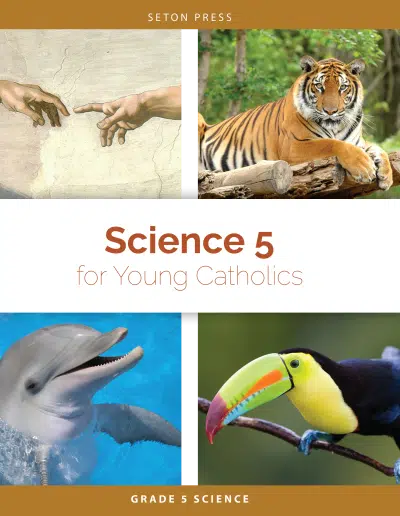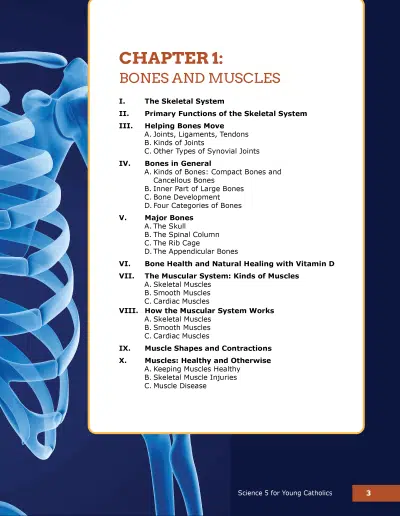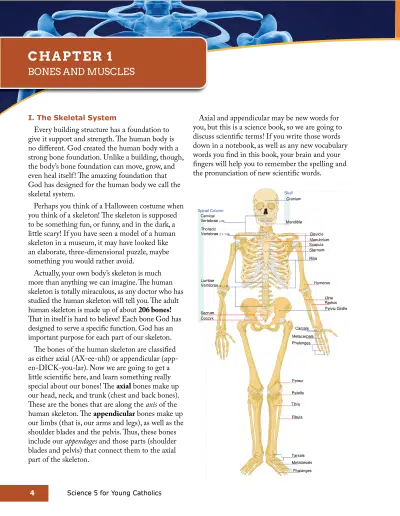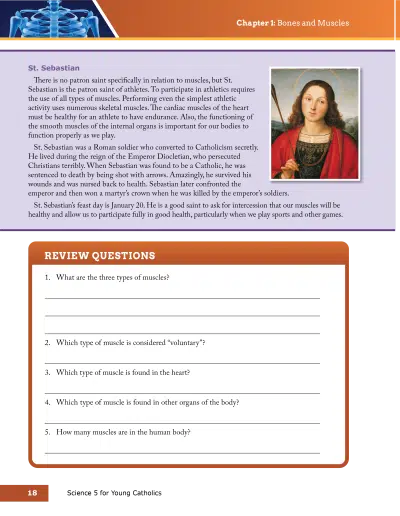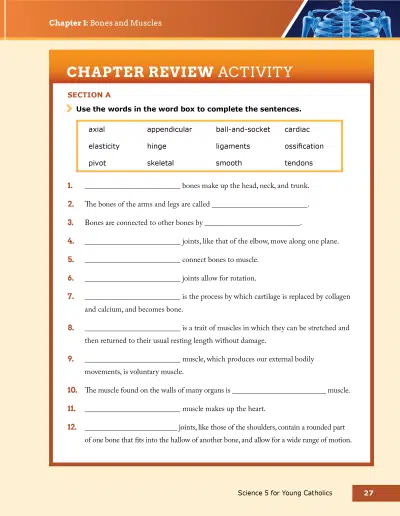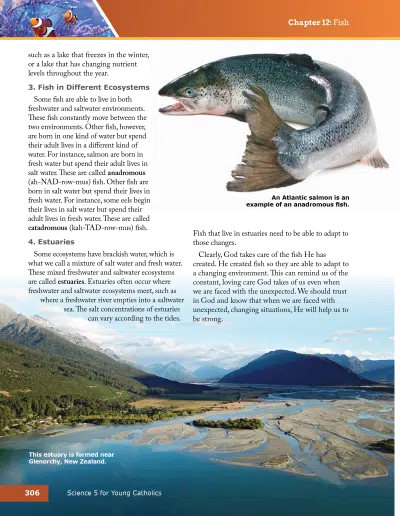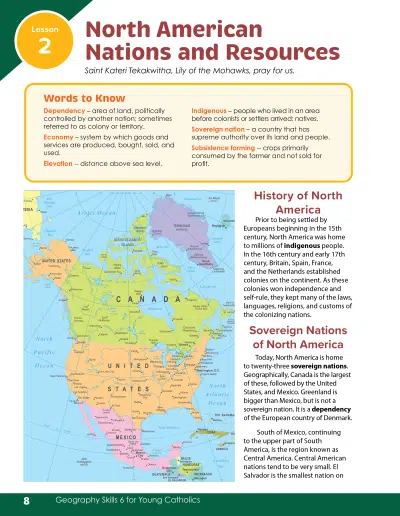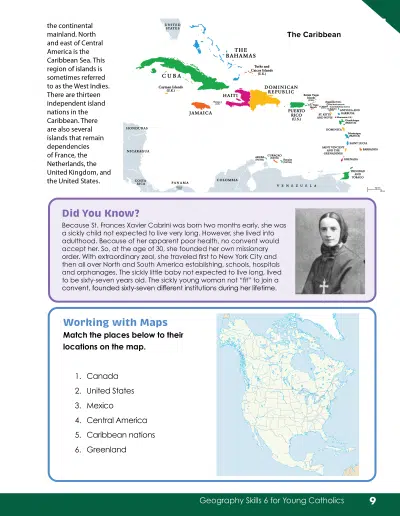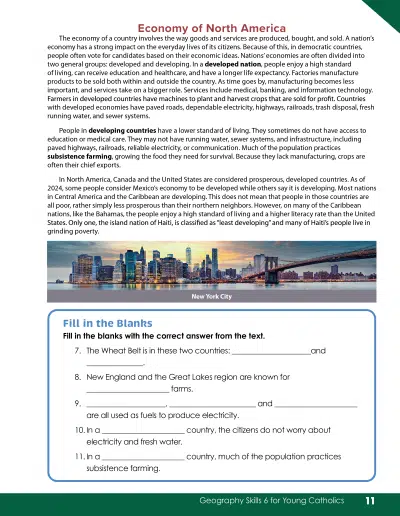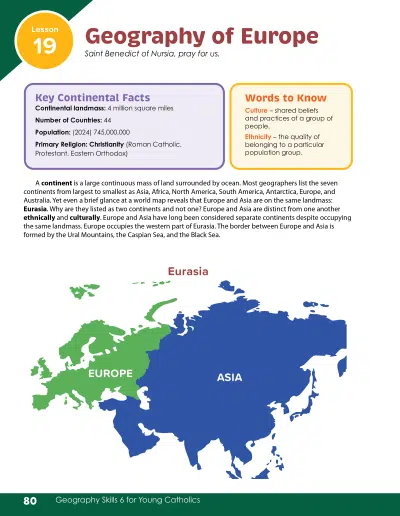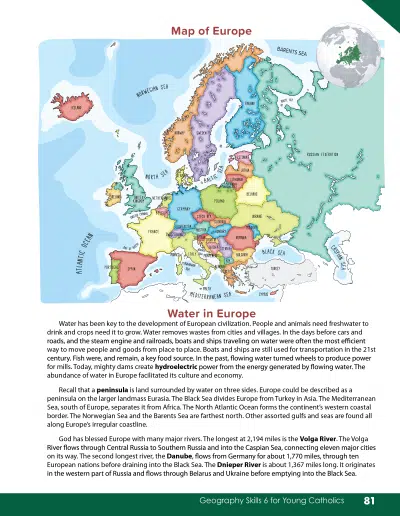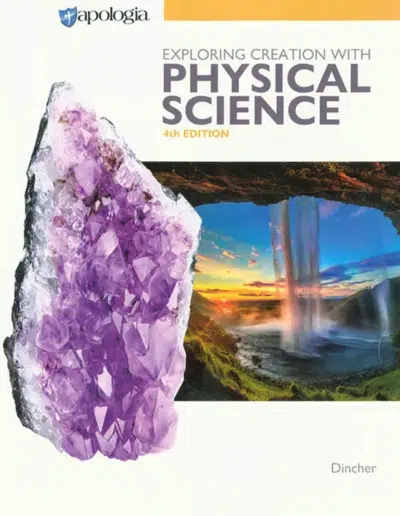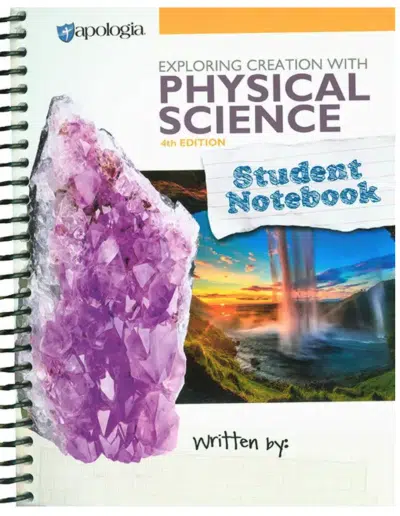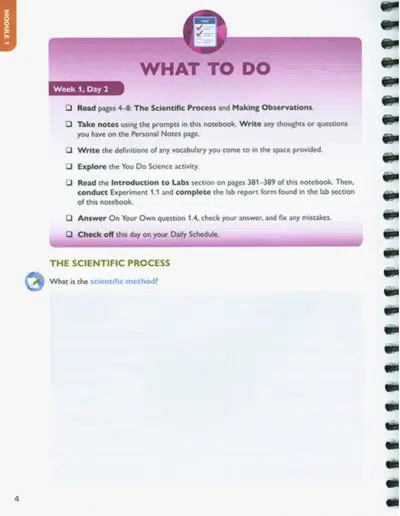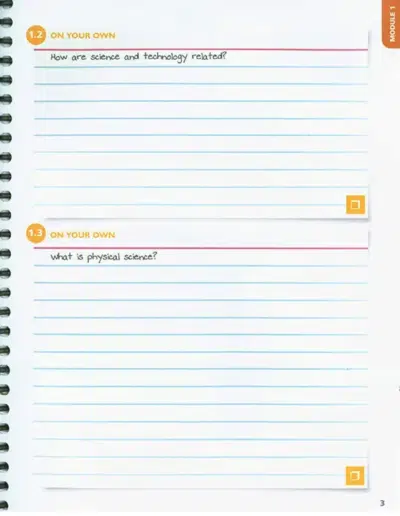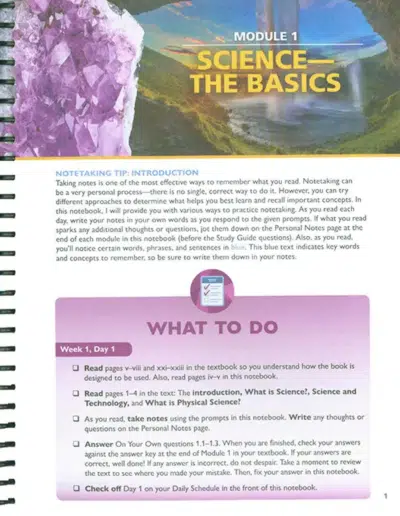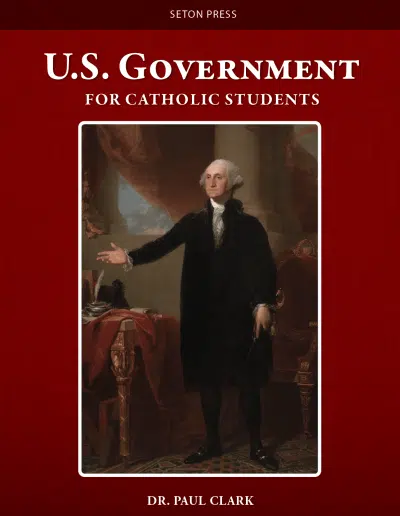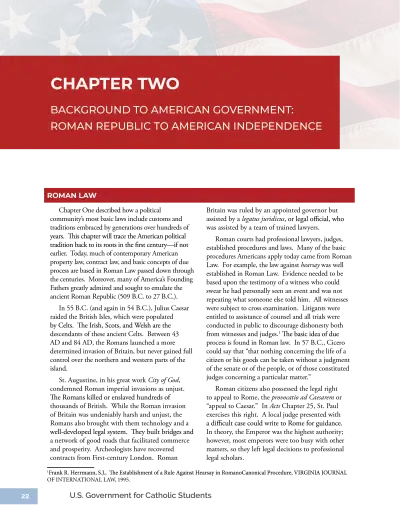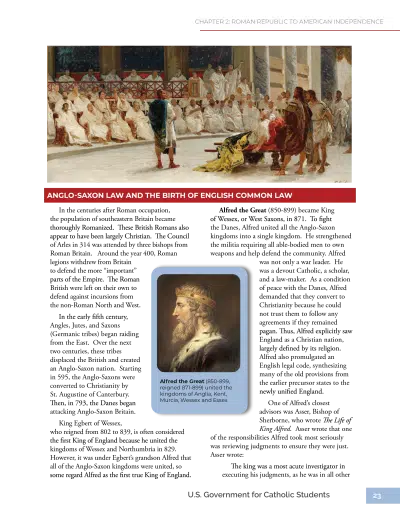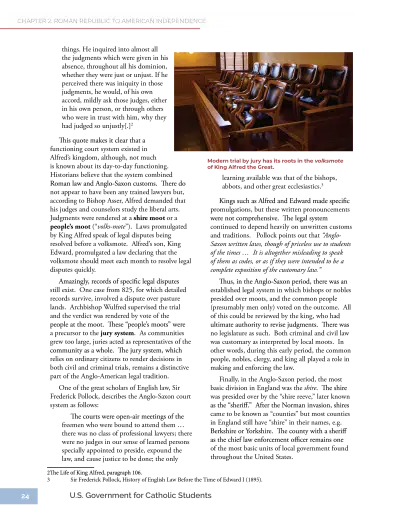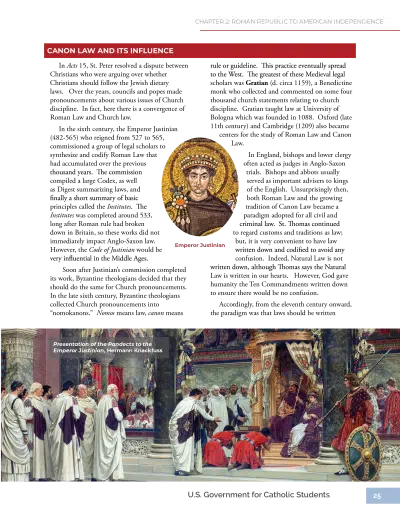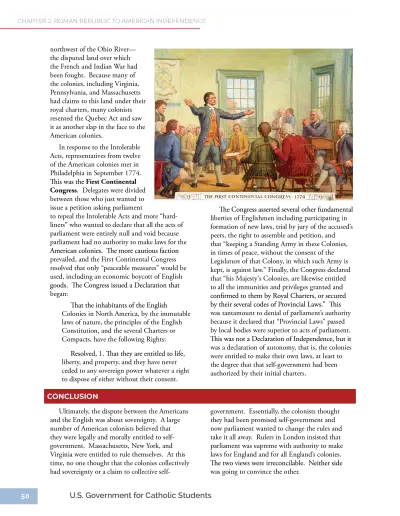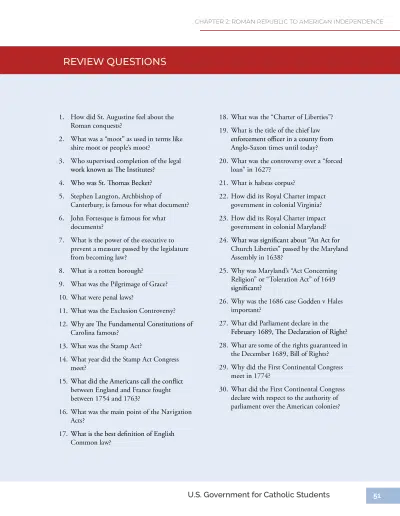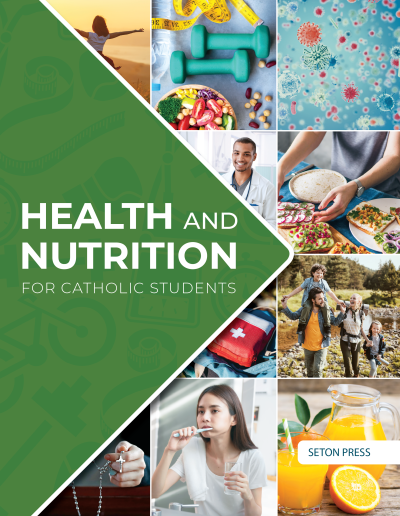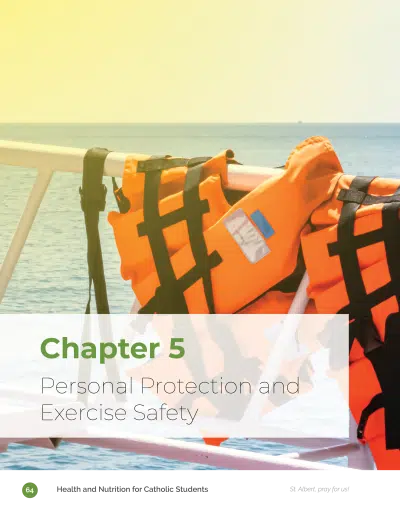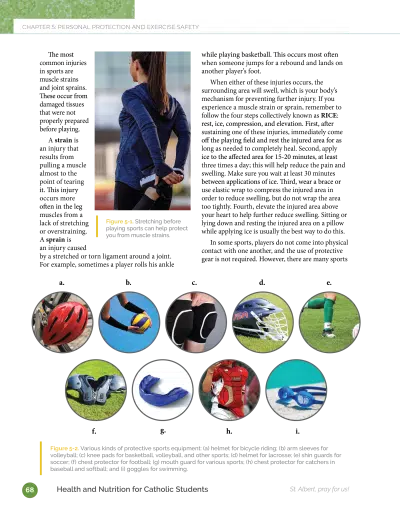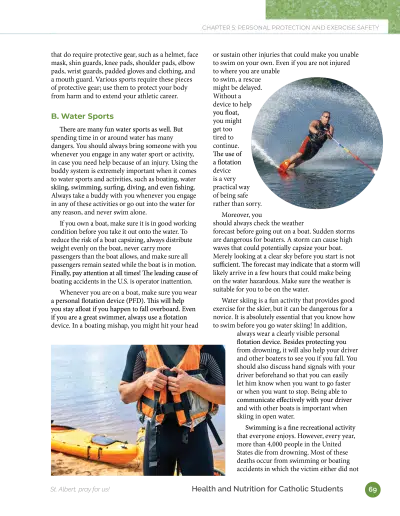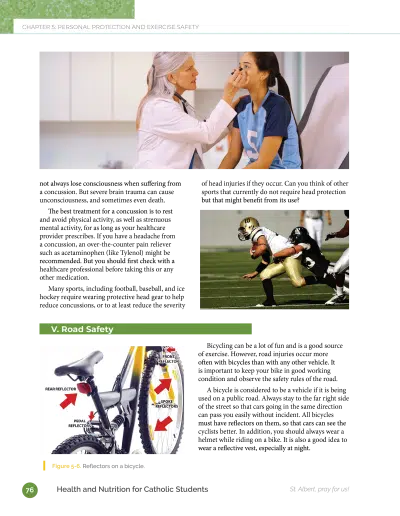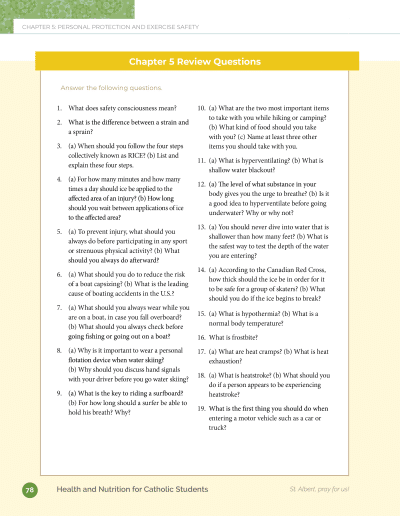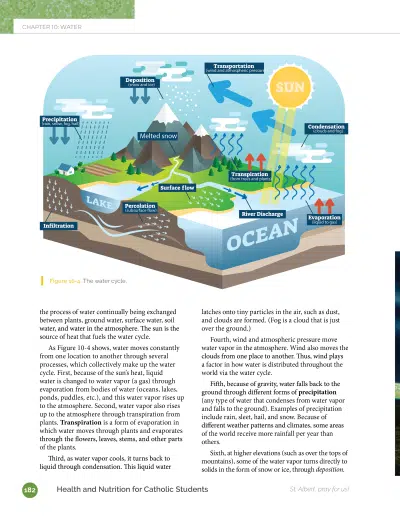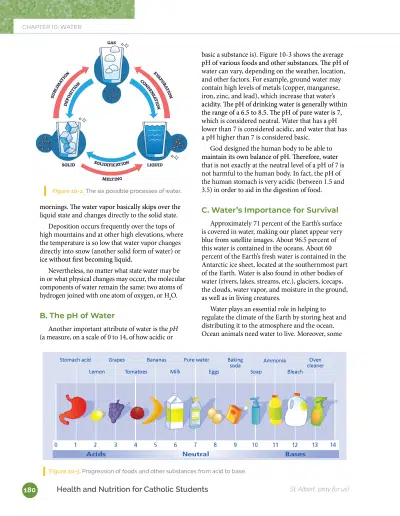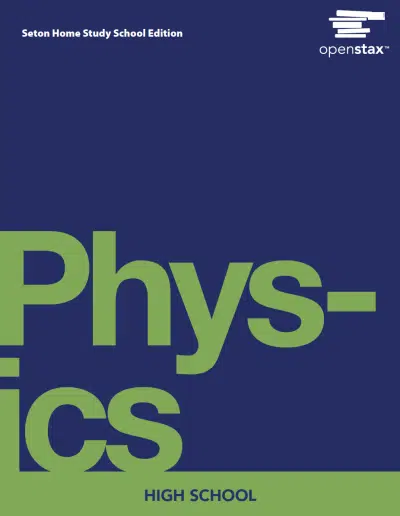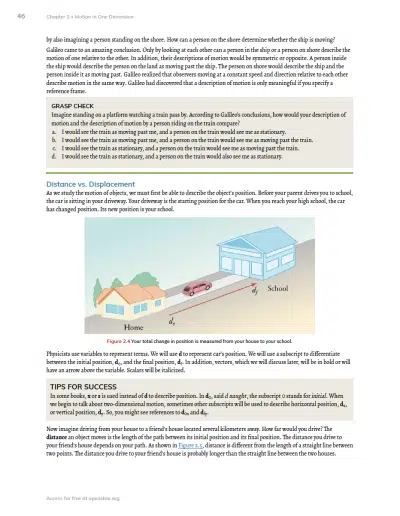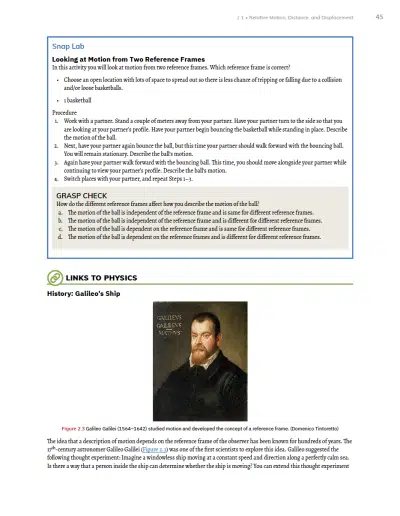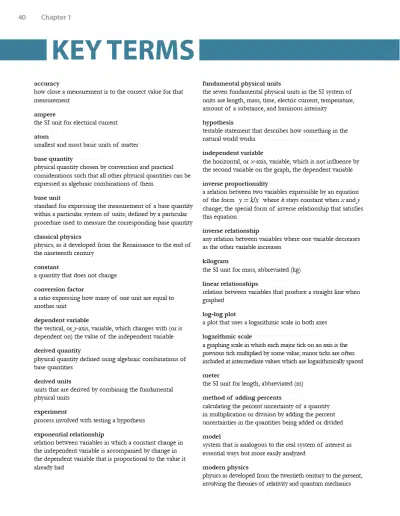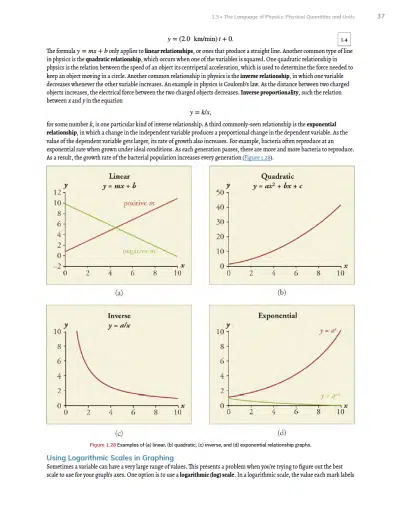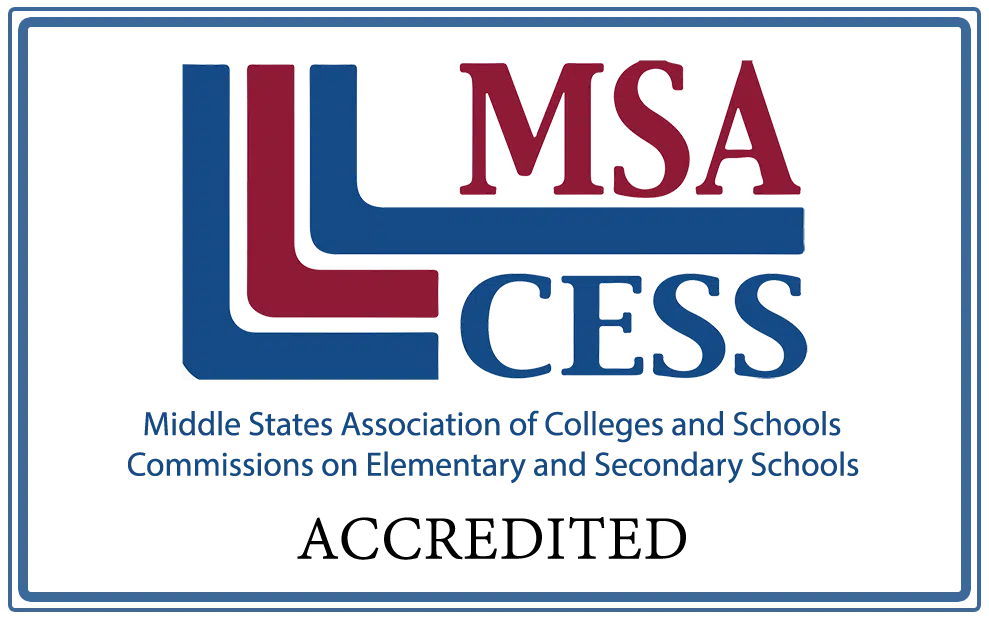Seton works incredibly hard to both keep our costs to families as low as possible and constantly improve the quality of our curriculum. Despite rising costs everywhere else, Seton has announced no tuition increases for 2025. Our new curriculum improvements and course updates will become available on June 16 (unless otherwise noted). Here is a list of all the changes parents might like to know about.
ELEMENTARY
PHONICS
Phonics K, 1, and Spelling 1 are undergoing a cosmetic change. They will be getting new covers that are more consistent with Seton’s other traditional Catholic art covers. These new covers will feature St. Joseph for Phonics and the Holy Family on Spelling, and these books will be getting some additional inside pages with traditional Catholic art. The content of the courses will be essentially unchanged. This is a minor change that I might not normally include in a list like this, but since it is a cover change, and we usually only change covers when there is a massive change inside the book, I wanted to explain that the content inside is not really changing to help avoid confusion. This won’t be a June 16 change, but will occur as we run out of the previous printing.
ART
Art 3 is an entirely new course and book. This is the crown jewel of our 2025 curriculum updates. Historically, our Seton Art courses have either been art appreciation like the Rosary in Art (Grade 5) or Art Through Faith (Grade 8). Those are beautiful by virtue of the art that is in them to be sure, but there really isn’t any hands-on component to those courses. Other courses, like Art 1 and the old Art 3, are more purely arts and crafts courses. They don’t have much in terms of appreciation and are filled with older black and white line drawings used in the crafts. Those books wouldn’t usually be called beautiful apart from their covers. The new Art 3 (2nd Edition) combines art appreciation with hands-on projects. In one lesson, you learn about rose windows and stained glass, and then in the next lesson, you make your own rose window!
The book was designed by Mary Ellen Barrett, the primary author of our popular new Kindergarten Art and Poetry course. The new Art 3 also has project step-by-step instructions far superior to anything we have done before. Seton’s staff artist, Nathan Puray created videos showing how each project can be completed, and the book itself shows picture demonstrations of the steps and final product samples to help guide parents and students. Many of the supplies needed are regular household items, but our Seton bookstore team has also created a package of paints and other supplies that you can purchase. While the kit doesn’t include all the supplies needed like paper, it includes most items needed to complete the projects in the book.
SCIENCE
Science 5 is getting a complete visual redesign. The content is the same, but the graphics and layout bring a high quality, beautiful, and professional look to the solid content we already have in the course. Diagrams and illustrations are such an important part of Science courses, so this really is a pedagogical improvement and not merely a cosmetic improvement. Because the text is the same, we are not calling this a different edition of the book, but we are instead calling it a different printing and making just a minor cover change, replacing a lion with a tiger is one of the quadrants of the cover so that our counselors can more easily help parents identify which version of the book they have if questions arise.
HISTORY
History 6 has a new Geography Skills 6 workbook. This is the latest addition to our Catholic Geography Skills series and pairs with the Geography Skills 7 book that came out last year. Level 6 covers North and South America as well as Europe and then the Level 7 book covers Asia, Africa, and Oceania. These books cover serious geography content, not just map skills like the old Continental Press or Scholastic books. These cover the Geography, History, Government, Culture, and Economies of many of the major countries in each region in addition to learning map skills. Most importantly, they are Catholic, so they also have some information about the Church or local saint in many of the countries.
AUDIOBOOKS
Seton is always trying to find new ways to use technology to improve the quality of our courses and increase the value of your enrollment. Last year, we came out with computer-generated videos for our elementary music courses which play the songs and highlight each note on the score as it is played. This year, one of our projects is creating audiobooks. Of course, the concept of an audiobook is nothing new, but what is new is the ability to create computer-generated narrations that sound completely natural. We have the new high school U.S. Government course content in audio form. We plan to move on to the Junior High Science and History courses next and have at least some of those finished by Fall. The goal for this year is to create audiobooks for all the Seton Press books for Junior High and High School in the subjects of Science, Social Studies, and Religion/Theology. These are not robotic sounding recordings. You will be amazed at how far technology has come to be able to produce life-like audio. You can listen to a sample lecture on the U.S. Government course page on our website.
For current audiobook roll-out status, please visit setonhome.org/audiobooks
HIGH SCHOOL
PHYSICAL SCIENCE
Apologia came out with a 4th Edition of their Physical Science textbook and discontinued the Student Notebook for the 3rd Edition. Seton has now created a course using the 4th Edition book and any family looking to use the Student Notebook should select that revision of the course. First this year, the 3rd Edition will remain our default 9th Grade course, but the 4th Edition will become the default next year. One of the major differences is the why the supplemental Student Notebook is designed. Apologia has now essentially added their own 32-week lesson plans into the Notebook, with additional assignments like labs and a research report. Having two sets of incompatible lesson plans would be fairly confusing. While we have Seton lesson plans for the 4th Edition, we recommend that if you are using the Student Notebook that you just use the lesson plans in the Notebook and take the Seton tests. Historically, about 20% of families opt to purchase the Student Notebook. With this new edition, the Notebook route really also requires the purchase of the Apologia tests and answer keys packet which has the answers to exercises in the Notebook.
U.S. GOVERNMENT
Last year, Seton came out with a new U.S. Government Online course written by Dr. Paul Clark (one of Dr. Mary Kay Clark’s sons who is both a professor of philosophy and a practicing lawyer). This new content is now being printed as a new physical Catholic U.S. Government textbook, so the course will no longer only be online. This means there would be a new course with just the name “U.S. Government” and the “U.S. Government Online” will be discontinued. Now that we have a Catholic government textbook, we will be discontinuing the Foundations of American Government course which used a textbook from Abeka though we will continue to make this course available to families who already own the Abeka textbook. The structure of the course will remain the same as it was online. This is a half-credit course that satisfied the government diploma requirement. It is a default course in 12th Grade and is limited to juniors or seniors only.
HEALTH AND NUTRITION
The Health and Nutrition Online course is also getting a beautiful physical textbook in the same style as our Biology for Life book. While the text content is the same, we put together many new graphics for the new Catholic textbook. The new name for the course will just be “Health and Nutrition” without the word Online at the end. This new textbook is a drastic improvement in the quality of presentation and something we are very excited about.
HONORS APPLIED PHYSICS
The current Saxon Physics course is at an advanced level requiring Algebra 2 (and ideally Pres-Calculus) as a prerequisite. As a result, only about 100 students each year take Physics with Seton, which is a shame because it is an extremely important science. We have a new Physics course which I talk more about below, but for the Saxon Physics course, we have renamed this course and given it an honors designation without changing the course design. It is now called Honors Applied Physics. Any student who is currently enrolled in the Saxon Physics course will have their course name changed. Having an “honors” course not only looks good on transcripts going to a college, but also Seton honors courses have a 5% grade bump, so if a final course grade would have been a 90 based on the tests, an honors course student would get a 95.
PHYSICS
The new Physics course requires Geometry as a prerequisite. The textbook is an OpenStax textbook that has been modified slightly by Seton. OpenStax is an organization that creates free “open source” college textbooks and they have been branching into some high school subjects as well. While the books are purely secular, Seton has gone through to ensure there is nothing objectionable, removed some things that might be considered controversial, and even removed a few chapters that didn’t seem necessary for our course. This course focuses on Newtonian Physics without delving into the more advanced relativistic and quantum physics as those require more advanced math. It is crucial to make sure students have a strong grasp of the fundamental concepts which they can more easily grasp before moving into the more advanced concepts.
Physics is a very important subject, and while this course is not currently one of our default science courses, it would be an excellent option for those interested in science, and it is a course we will consider making default in the future. Although this would not be our usual recommendation, our science and math counselors have determined that this new Physics course and the Honors Applied Physics are different enough in level and some content that they can both be taken for credit—i.e., they are not mutually exclusive like Algebra I (Saxon) and Algebra 1 Online (Teaching Textbooks) which cannot both be taken for credit by the same student.
HISTORY DEFAULT GRADE LEVELS
In the past, World History has been a default course for 10th grade and U.S. History has been a default course for 11th. We are switching those this year for two reasons. First, the World History tests are more difficult than the U.S. History tests. Second, Seton has written a new history of Western Civilization book which is not published yet but will replace World History and will be available in June of 2026. This new book will be a slightly longer than the current two-volume U.S. History, and 11th Grade will make more sense as a long-term default.

